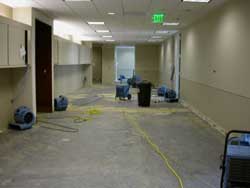Do you deal with basement moisture issues? In addition to basement waterproofing, consider mold testing and remediation.
A damp or wet basement isn’t simply undesirable to hang around in. The humidity in the air and the musty odor that often accompanies it are just the start of your problems. Basement dampness can harm possessions saved there and speed up deterioration of your structure, walls, floors, and other structural aspects. On top of all that, a moist, inadequately aerated basement is a prime breeding place for mold and mildew.
Mold growth is unattractive, and it’s likewise unhealthy. Breathing in mold spores over an extended period of time can contribute to respiratory concerns, headaches, allergies, asthma, and in major cases, some type of cancer. Even if you do not see noticeable indications of mold development, if your basement is constantly moist and damp, you might have a mold issue behind the scenes. Bring in a mold testing and removal specialist to evaluate the scenario and create a strategy to move forward, mold-free.

Signs of Mold Growth
Aside from noticeable mold-usually green, brown, gray, or white splotches on the walls, ceiling, floorings, and even your belongings-there are specific indicators that you may require mold testing and remediation. These consist of:
– A musty smell
– Water damage in specific areas, such as water stains, peeling wallpaper or paint, and dampness in the walls or carpets
– Water leakages from pipes or the outside
– A recent flood in the basement
– An increase in health issue, such as sneezing, coughing, and headaches, after hanging around in the basement
If you’re experiencing any of these symptoms, it’s worth bringing in an expert for mold testing. It’s better to test and discover no mold than to neglect the problem till it becomes severe and more difficult-and expensive-to resolve.
Mold Testing Procedures
Mold testing isn’t practically whether mold spores and development exist. It’s also crucial to figure out how widespread the problem is, where exactly mold is flourishing, and what type of mold is growing. A mold inspection in San Antonio will take a look at issue locations and take samples of the mold. He may also sample the air for spores and test other parts of your home or workplace. Then, a laboratory can examine the sample and determine the type and concentration of the mold, which can impact what mold remediation techniques will be most efficient.
Mold Removal and Prevention
When mold has been discovered on your home, it’s crucial to get rid of it quickly, before it spreads out even more. Your tailored mold removal method may include scraping away visible mold, vacuuming it up, dealing with the surfaces with antimicrobial and antifungal agents, and cleansing the air. Your mold professional may also recommend eliminating and changing products that are too infected to be restored. Throughout the mold removal procedure, the polluted locations need to be sealed to avoid mold spores being reached other parts of your structure through the air.
Mold remediation isn’t done till you’ve taken steps to keep mold from ever returning. That means handling any staying basement moisture issues and keeping the area as aerated as possible. And now that you know what to look out for, you can get in touch with an expert at the very first sign of mold regrowth. A mold-free building is safe and healthy for everyone who lives or works in it.